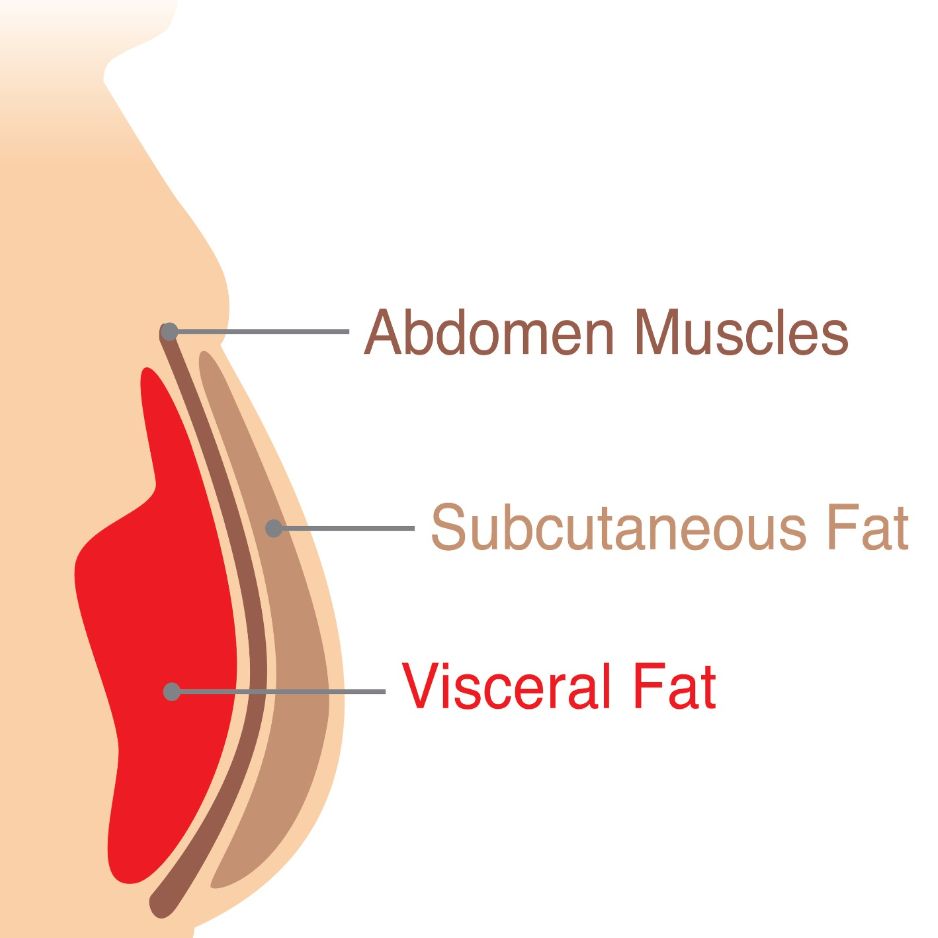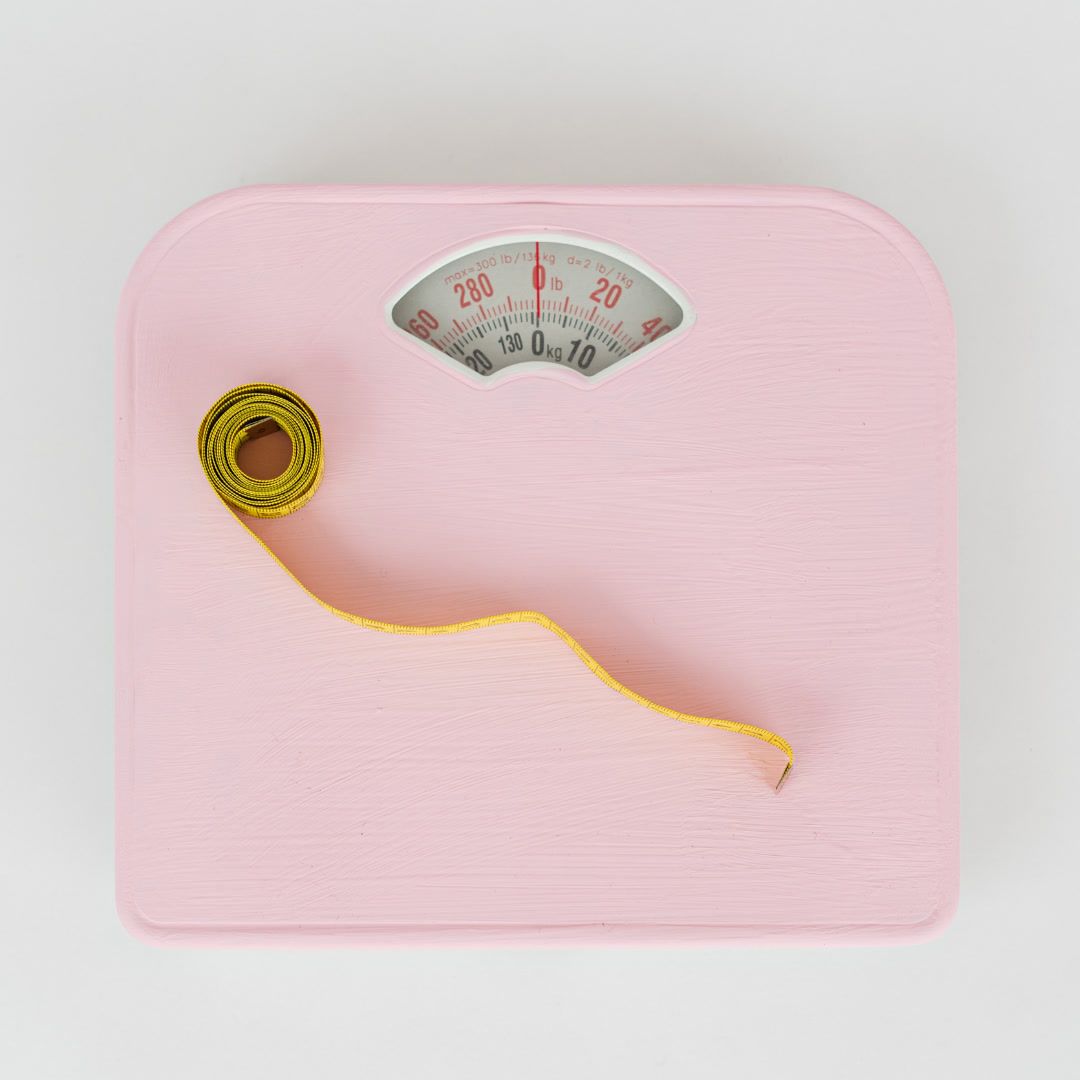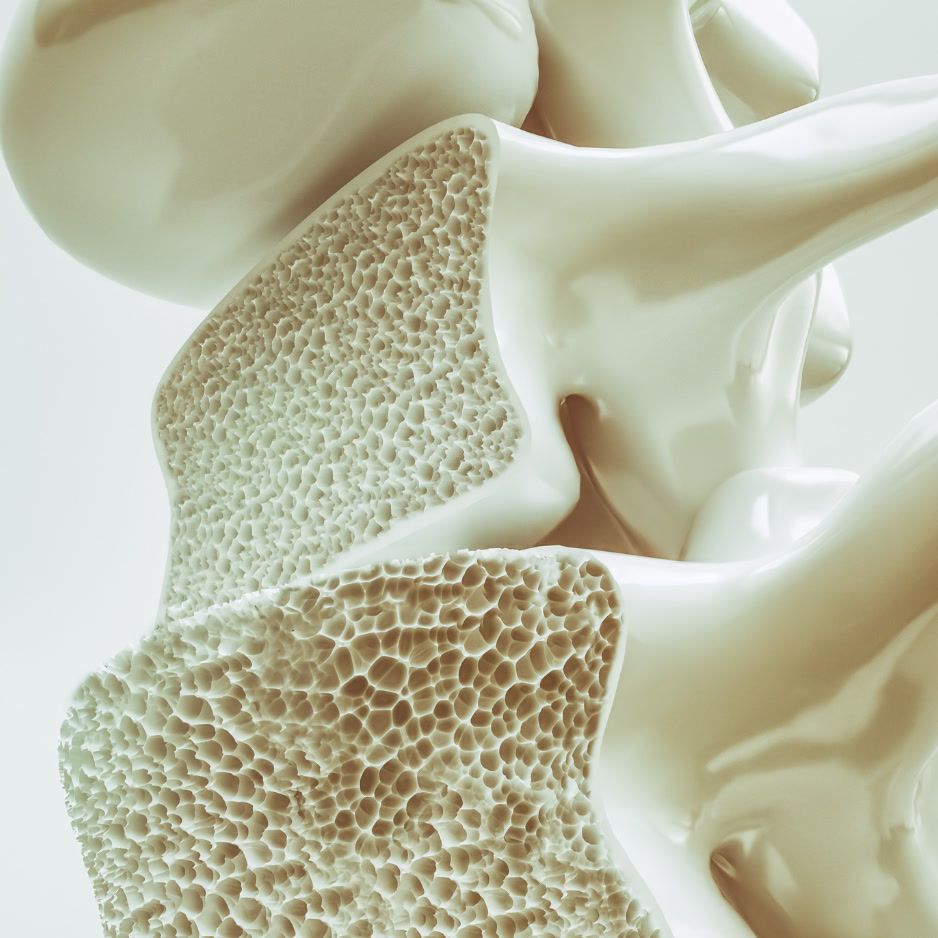Bone Density Test: Key Insights and Guidelines
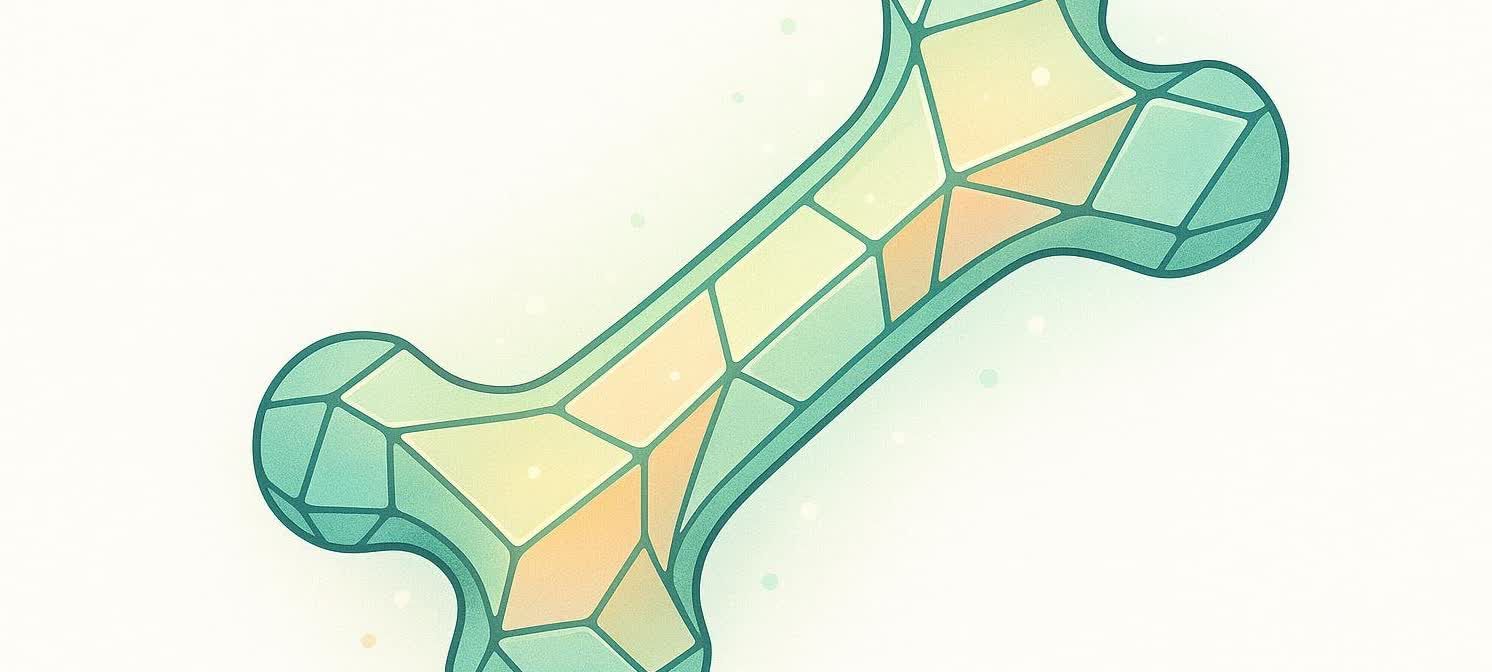
Bone Density Test: Everything You Need to Know
Bone health often flies under the radar—until a fracture or a doctor’s warning brings it front-and-center. This matters because your skeleton is living tissue that changes throughout life, and those changes are measurable.
A bone-density test—also called a bone-mineral density (BMD) test—measures those changes with precision. Leading health authorities, including the Bone Health & Osteoporosis Foundation, recognize DXA bone-density testing as an established standard for assessing fracture risk and diagnosing low bone mass.
This guide walks you through every step, from deciding whether you need the test to interpreting your results and planning next actions with your healthcare provider.
BodySpec Quick Note
BodySpec offers a full-body composition DEXA scan that includes a bone-density measurement. Because the scan is optimized for wellness tracking, it is considered non-diagnostic under current medical guidelines. However, it still functions as an early screening tool. If your BodySpec report suggests low bone density, view that as a prompt to discuss preventive measures—like strength training and vitamin K for bone health—with your doctor, who can advise on ordering a diagnostic central DXA scan if needed.
What Is a Bone Density Test?
Your bones are dynamic tissue that is constantly broken down and rebuilt. A bone-density test quantifies how much mineral—primarily calcium—is packed into specific bones at a single point in time.
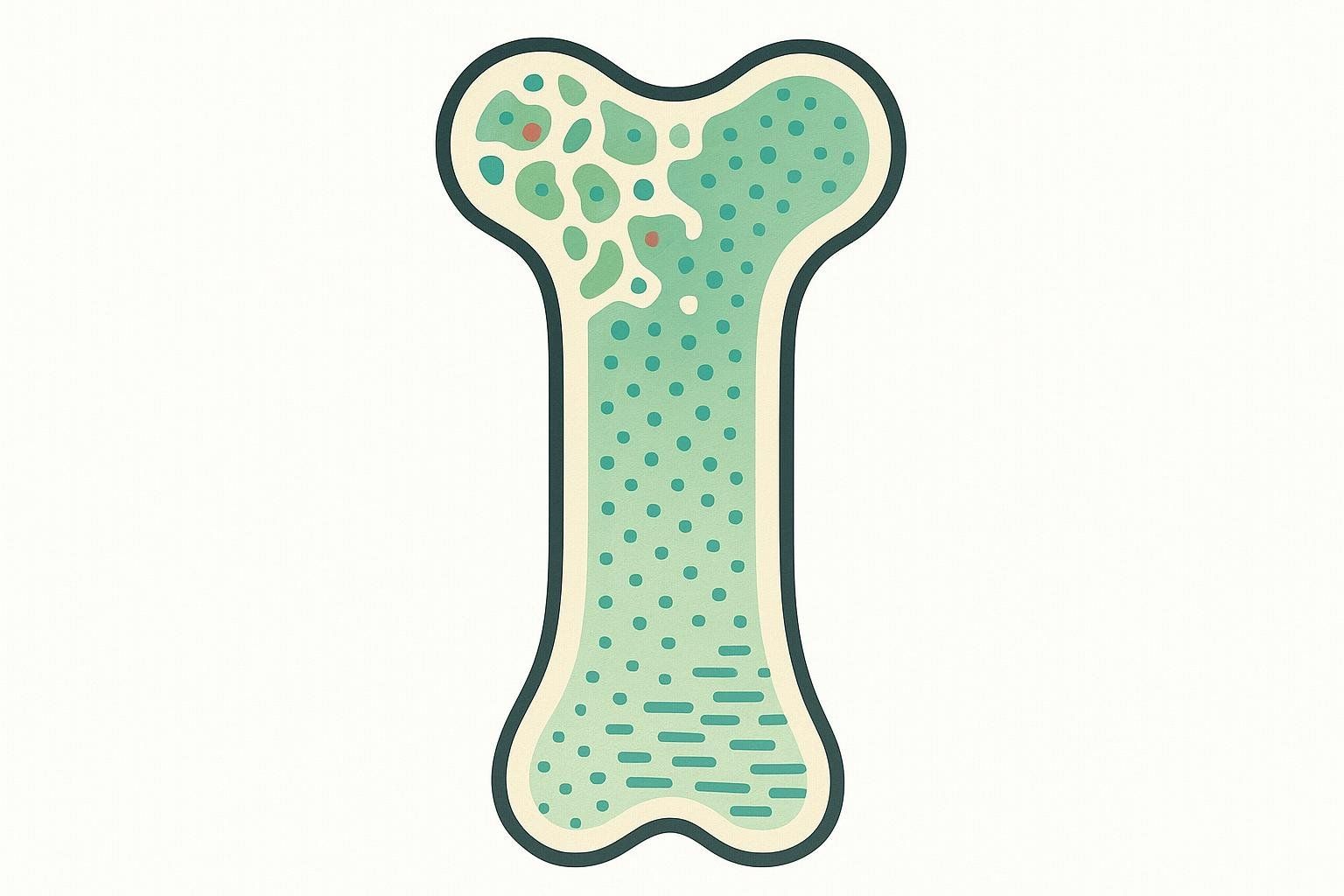
The most common method is DXA (dual-energy X-ray absorptiometry). It uses two low-dose X-ray beams to measure bone mineral content, most often in your spine and hips.
After the scan you’ll see a raw value reported in grams per square centimeter (g/cm²). DXA software then converts this raw data into two standardized scores:
- T-score: compares your bone density with that of a healthy 30-year-old of the same sex.
- Z-score: compares your bone density with people your own age, sex, and ethnicity.
You can read more about how these scores are calculated in the NIAMS guide to BMD scores.
Why Bone Density Matters
- Low bone density predicts fractures before they happen.
- Early detection gives you time to intervene with lifestyle changes and—when appropriate—medical therapy.
- Tracking density over time shows whether your plan is working.
If you’d like a refresher on how a DEXA machine assesses full-body composition—not just bone—see What Is a DEXA Scan and How Can It Help?.
Why and When Should You Get Tested?
USPSTF Osteoporosis Screening Guideline (Read the USPSTF Guideline)
- Women 65+ should be screened.
- Women < 65 should be screened if their fracture risk equals or exceeds that of a typical 65-year-old woman.
Endocrine Society 2020 Guideline for Osteoporosis in Men (Read the Endocrine Society Guideline)
- Men 70+ should be tested.
- Men 50–69 should be tested if they have risk factors such as low body weight or prior fracture.
Other major risk factors, summarized by the Bone Health & Osteoporosis Foundation (BHOF), include (Full list):
- Previous fracture after age 50
- Family history of osteoporosis or hip fracture
- Long-term corticosteroid use (≥ 3 months)
- Low body weight (BMI < 19 kg/m²)
- Smoking or heavy alcohol use
- Medical conditions such as rheumatoid arthritis, celiac disease, or early menopause
If any of these apply—or if you’ve noticed height loss or a stooped posture—talk with your clinician about bone-density testing.
Diagnostic vs. Non-Diagnostic DEXA: What’s the Difference?
| Feature | Diagnostic Central DXA Scan | BodySpec Full-Body Composition DXA (Non-Diagnostic) |
|---|---|---|
| Primary Purpose | Diagnose osteoporosis/osteopenia; guide medication therapy | Track body fat, lean mass, and provide an informational bone-density value that is not valid for medical diagnosis of osteoporosis but useful for spotting trends and overall wellness tracking |
| Scan Sites | Lumbar spine & proximal hip (ISCD-approved) | Whole body |
| Report Format | Includes T-scores & Z-scores that meet ISCD criteria for diagnosis | Provides bone density plus body-fat and lean-mass values |
| Insurance Coverage | Often covered when medically indicated | Cash pay; see our BodySpec pricing tool |
| Typical Settings | Hospitals, radiology imaging centers | BodySpec storefronts and mobile clinics (Book your BodySpec scan) |
The International Society for Clinical Densitometry (ISCD) sets strict acquisition and analysis standards before a scan can be labeled “diagnostic.” BodySpec uses the same low-radiation technology but follows a whole-body protocol tuned for repeat wellness monitoring.
Bottom line: If your BodySpec scan shows a downward trend or lower-than-expected bone density, view it as an early warning and follow up with your healthcare provider for a diagnostic central DXA.
Bone Density Testing Options: DXA vs. QCT vs. Ultrasound
| Characteristic | DXA (Central, Diagnostic) | QCT (Quantitative CT) | QUS (Ultrasound) |
|---|---|---|---|
| Typical Sites | Lumbar spine, hip, sometimes forearm | Lumbar spine, hip | Heel (calcaneus) |
| Radiation Dose | ~ 0.001–0.003 mSv (Health Physics Society) | 0.06–0.30 mSv | None |
| Accuracy | High (± 1 %) | Very high (excellent trabecular detail) | Lower; screening only |
| Relative Cost | Moderate | Higher | Lower |
| Clinical Use Case | Diagnosis & monitoring | Specialized cases/research | Preliminary screening |
BodySpec chose whole-body DXA because it blends precision, safety, and affordability for routine wellness tracking.
Want a deeper dive into scan tech? Read BodySpec DEXA vs. Other Body Composition Tests.
How to Prepare for Your DXA Scan
- Dress metal-free. Skip zippers, buttons, or under-wire bras that can interfere with X-rays.
- Pause calcium supplements for 24 hours so excess calcium doesn’t cloud spine images.
- Avoid recent contrast studies. If you’ve had a barium exam or contrast CT/MRI, wait at least two weeks.
- Eat and hydrate normally. No fasting needed.
Need more tips? See 5 Tips for a Successful BodySpec Scan.
Step-by-Step: What Happens During a Bone Density Test
Below is a typical diagnostic central DXA timeline. BodySpec’s non-diagnostic full-body scan is even quicker—about 10 minutes from lay-down to stand-up—because it captures the entire body in a single pass.
| Minute | What’s Happening |
|---|---|
| 0–2 | Check-in, brief questionnaire |
| 2–4 | Change into scrubs (if needed) & remove metal |
| 4–8 | Technician positions you; scanning arm glides overhead |
| 8–12 | First pass: lumbar spine |
| 12–16 | Second pass: hips |
| 16–20 | Optional: forearm or whole-body composition |
| 20–22 | Procedure complete; you can get dressed. For diagnostic scans, a radiologist-interpreted report is sent to your physician. BodySpec provides an immediate, non-diagnostic report focused on wellness metrics. |
Most diagnostic appointments wrap up in ~20 minutes (see How Long Does a Bone Density Test Take?).
Bone Density Test Benefits and (Minimal) Risks
- Very low radiation: About 0.001–0.003 mSv—less than a day of natural background radiation and far below the ~0.03 mSv you might receive on a coast-to-coast flight (Health Physics Society; see also BodySpec’s guide to DEXA scan radiation levels).
- Quick & painless: no needles, no IVs.
- High precision: diagnostic central DXA offers ± 1 % precision for key sites like the hip and spine, allowing clinicians to detect meaningful change within 12 months.
- Actionable: early detection plus lifestyle tweaks or medication, under medical guidance, can cut fracture risk dramatically.
Contraindications are rare: pregnancy, very recent contrast studies, or inability to lie flat for 10 minutes.
Bone Density Test Cost and Insurance: What to Expect
Diagnostic Central DXA
| Payer | Typical Coverage | Key Eligibility Notes |
|---|---|---|
| Medicare Part B | 100 % every 24 months for qualifying patients | Applies to women 65+ or estrogen-deficient at clinical risk, and to men or women of any age with: vertebral fracture, ≥ 3 months systemic steroids, primary hyperparathyroidism, or monitoring FDA-approved osteoporosis drugs (Medicare coverage) |
| Commercial Insurance | Usually covered with referral; copays vary | Pre-authorization is common |
| Cash Pay | $100–$250 | Imaging centers may bundle radiologist fee |
BodySpec Full-Body Composition DXA (Non-Diagnostic)
| Payment Method | Typical Cost | Notes |
|---|---|---|
| Direct Pay | $40–$60 per scan | Packages, memberships, and bundle discounts available. See BodySpec pricing for details. |
| Insurance | Not billed | Wellness scan—customers pay out of pocket |
For more on pricing, see How Much Does a DEXA Scan Cost in 2025?.
VFA, TBS, and Other Diagnostic Add-Ons for Bone Density Tests
Advanced options usually tacked onto a diagnostic DXA session:
- Vertebral Fracture Assessment (VFA): A quick lateral-spine image to flag silent vertebral fractures.
- Trabecular Bone Score (TBS): Software analysis of DXA data to estimate bone micro-architecture—helpful when T-scores are borderline.
BodySpec’s non-diagnostic scan does not include these add-ons.
Decoding Your Results (Diagnostic DXA)
T-Score
Comparison to the average healthy 30-year-old of the same sex.
| T-Score | Interpretation | WHO Category |
|---|---|---|
| ≥ –1.0 | Normal | Normal bone density |
| –1.0 to –2.4 | Low bone mass | Osteopenia |
| ≤ –2.5 | Very low bone mass | Osteoporosis |
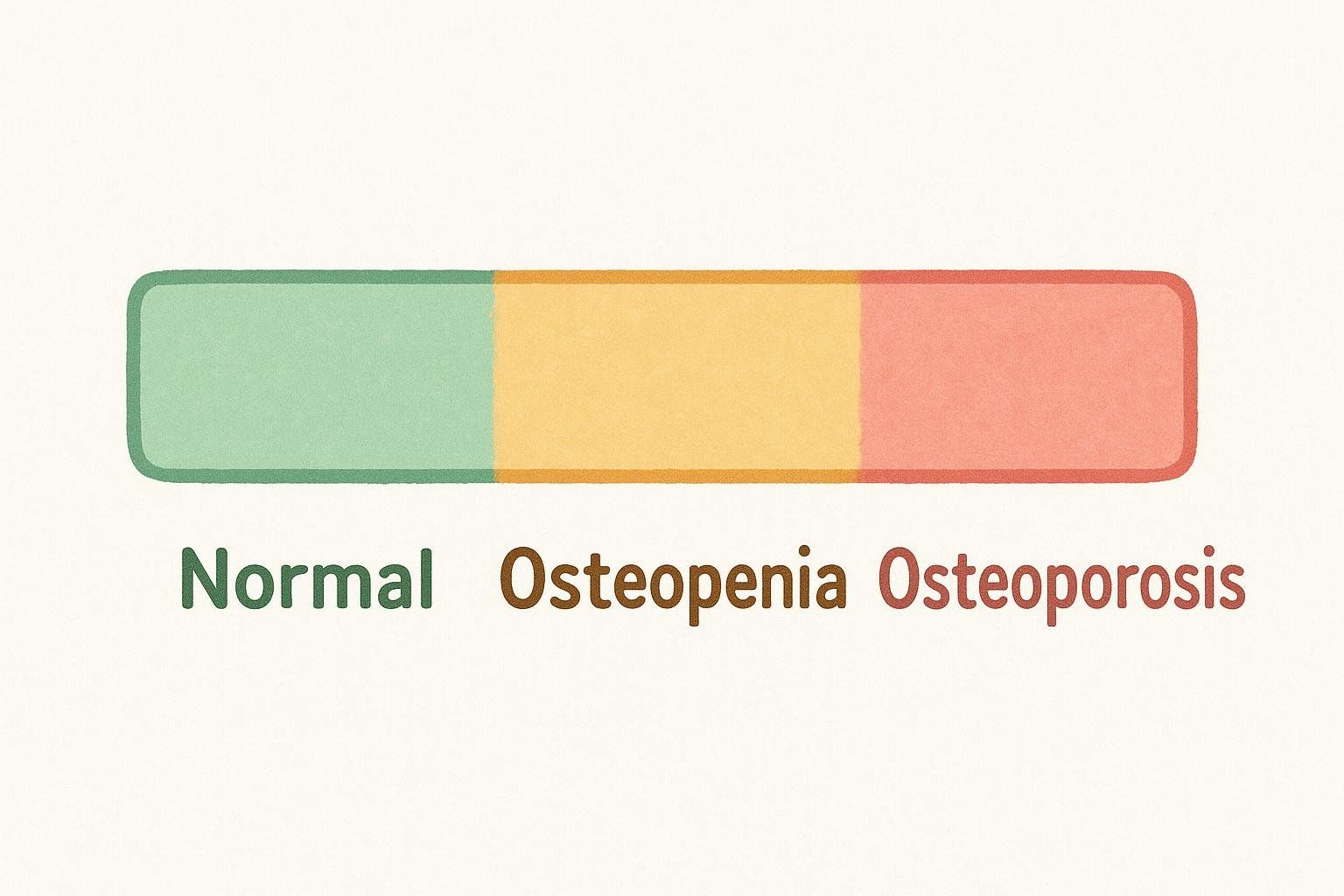
A T-score ≤ –2.5 in the hip, spine, or forearm meets the diagnostic threshold for osteoporosis in diagnostic DEXA scans.
Z-Score
Compares you with peers of the same age, sex, and ethnicity. A Z-score ≤ –2 may indicate a secondary cause of bone loss, prompting further medical evaluation.
FRAX 10-Year Fracture Risk
Clinicians often enter your femoral-neck T-score into the FRAX calculator to estimate your 10-year fracture probability. Treatment is typically considered when FRAX shows a ≥ 3 % risk of hip fracture or ≥ 20 % risk of a major osteoporotic fracture.
For a detailed sample report analysis, see Interpreting Your Bone Density Test Report.
Frequently Asked Questions
Does a bone-density test show arthritis or cancer?
No. It measures mineral density, not cartilage health or tumors.
How often should I repeat the test?
Diagnostic DXA: every 1–2 years if you’re on therapy or at high risk; every 3–5 years for low-risk patients with normal scores.
BodySpec wellness scan: as often as you’d like to track body-composition changes—many clients scan monthly or quarterly.
Can strength training improve my T-score?
Weight-bearing and resistance exercise stimulates bone formation. See Strength Training for Bone Density.
Is the test safe during pregnancy?
DXA is generally postponed, despite minimal radiation.
Ready to Book Your Scan?
Curious about your bone health and overall body composition? Schedule a non-diagnostic, full-body DEXA scan with BodySpec—it takes just 20 minutes and starts at $40. Bring the report to your healthcare provider if you need a formal, diagnostic follow-up.
Key Takeaways
- A bone-density test spots fracture risk long before symptoms appear.
- DXA is the established standard thanks to high precision and ultra-low radiation.
- BodySpec’s whole-body scan is non-diagnostic but serves as an early screening tool.
- Understanding T-scores, Z-scores, and FRAX turns data into action.
- Diagnostic DXA is often insurance-covered, while BodySpec's wellness scans remain an affordable, cash-pay option for regular monitoring.
